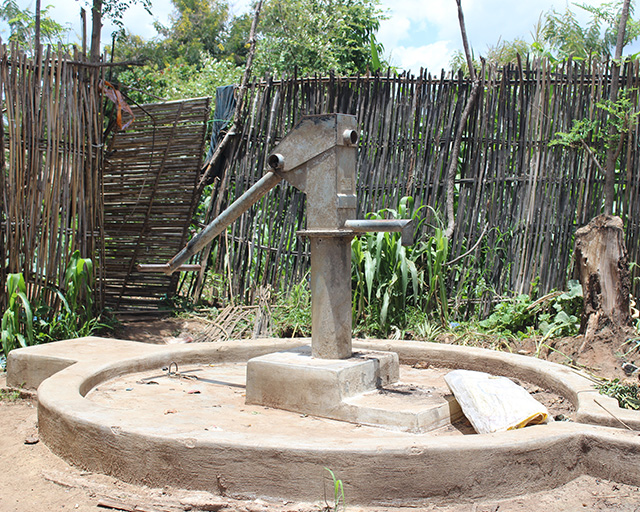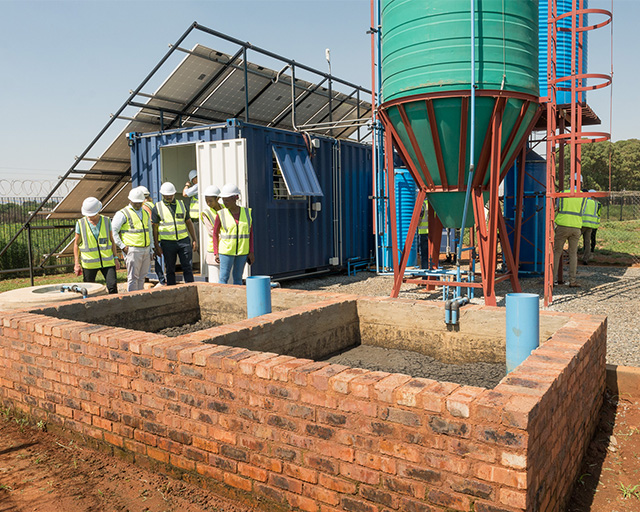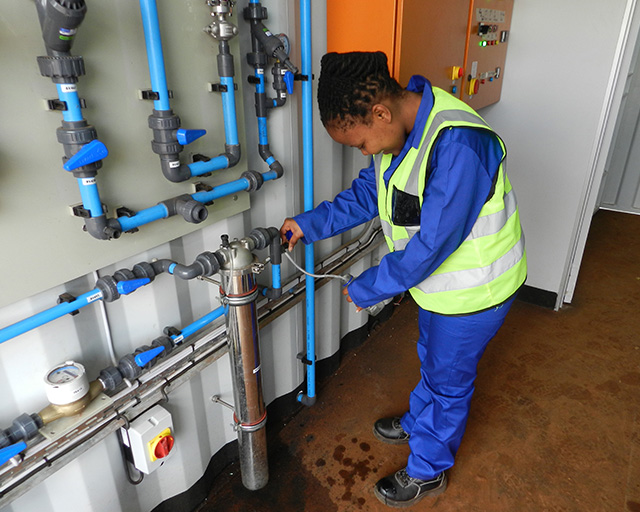Water purification for rural regions in Southern Africa
Safe water “Made in Africa”
More than 100 million people in Southern Africa still have no access to clean water. Especially in rural areas, many streams, lakes or other natural sources are heavily polluted. Together with nine other European and African partners, the Fraunhofer Institute for Surface Engineering and Thin Films IST has developed a decentralized water-purification system in order to change this.



In rural regions of Southern Africa, the primary sources of water are rivers, dams and wells. These, however, often contain pathogens and contaminants, introduced increasingly by the growing population. In the EU-funded project “Self-Sustaining Cleaning Technology for Safe Water Supply and Management in Rural African Areas”, SafeWaterAfrica for short, an energy self-sufficient water-treatment system was developed in collaboration with European and African partners. It integrates different technology modules from the partners into a decentralized overall system supplied with renewable energy. The therein contained water disinfection and removal of micro-pollutants is based on the principle of electrochemical oxidation, which was developed primarily at the Fraunhofer IST. In this process, a low voltage is applied between two specially coated electrodes, with which the water molecules H2O are directly split into ozone (O3) and reactive OH radicals. Both end products – ozone and the OH radicals – have a very strong disinfection or oxidation effect. They decompose viruses, germs or other organic pollutants quickly and efficiently; an additional application of chemicals is not necessary.
Successful test operation of demonstration plants
Within the framework of the project coordinated by the Fraunhofer IST in Braunschweig, two container-based demonstrators were constructed and successfully tested over several months. Even though the project has been completed, the demonstrators are currently still being used, for example for educational purposes, for presentations to interested parties and investors, or for investigations into the post-treatment of water from sewage-treatment plants. The first demonstrator built by the South African partners is located in Waterval near Johannesburg, South Africa, and has been in operation since September 2018. The second plant was commissioned in April 2019 in Ressano Garcia, Mozambique. Both demonstrators produce approximately 10 cubic meters of water per day. The quality of the water fulfils both WHO standards and the South African National Standard (SANS) 241 for drinking water. The quantity corresponds to the minimum requirement, which is conceded by the South African government for approx. 300 people. The demonstrator in South Africa runs energy self-sufficiently and can therefore operate in the absence of an electricity grid. Solar modules and batteries enable grid-independent operation. 7 – 8 hours of sunlight are sufficient in order to produce the 10 000 liters of clean water per day.
Operation and construction of the plants secures jobs
A special feature of the water-treatment plants is that they are built in Africa and can be operated independently by the local users, thereby promoting their acceptance and creating jobs for the local population. A remote diagnosis system supports operation and maintenance as well as repair processes. Simple malfunctions are repaired directly by the operator on site, whilst more complex malfunctions are forwarded to an employee with a higher level of training who is responsible for several plants. The involvement of the manufacturer in the elimination of disruptions is only the last step in the chain.
A business plan has already been drawn up within the project, with which the consortium is planning the market launch of the technology. Future plants will also be manufactured, installed and operated primarily in Africa. Plants of various sizes for different market segments are planned. A significant reduction in plant costs will be achieved through industrial production and the standardization of the integrated technology modules as well as the scaling up of the production capacity for clean water.
Last modified: